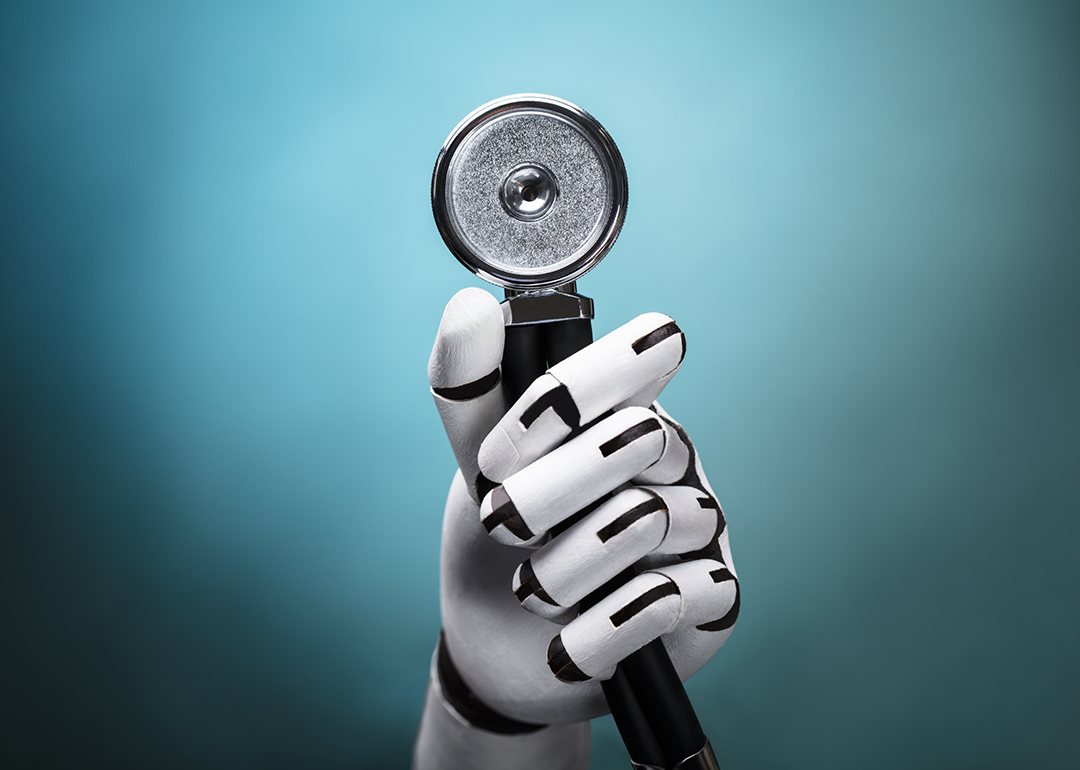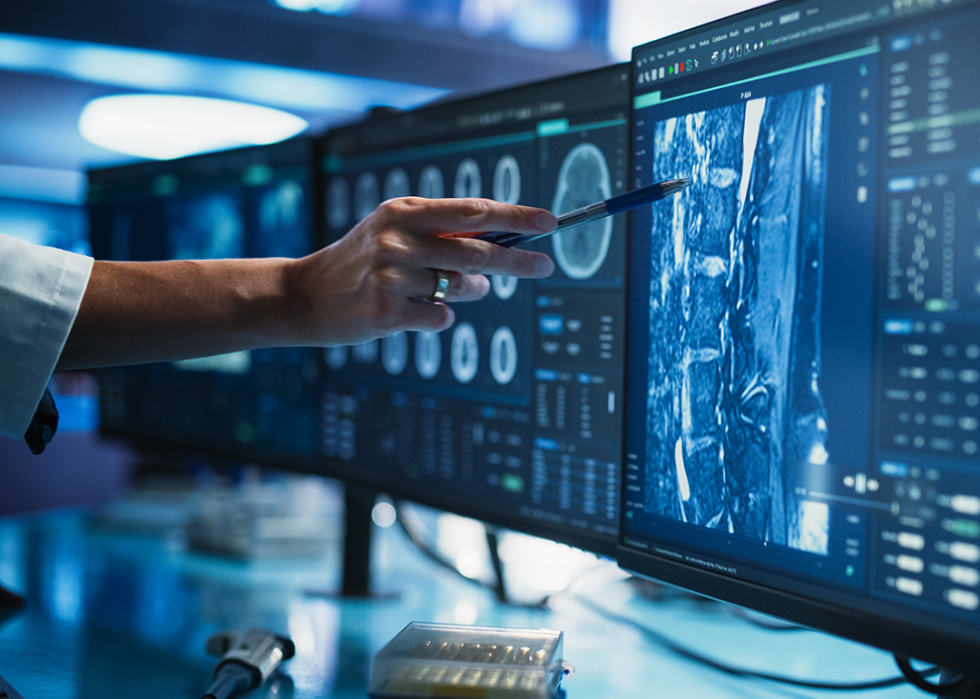
Doctors have been diagnosing patients for millennia. Soon, will robots?
This story originally appeared on Medical Technology Schools and was produced and distributed in partnership with Stacker Studio.
Doctors have been diagnosing patients for millennia. Soon, will robots?
In the classic sci-fi series "Star Trek," humans often relied on their tricorders—handheld devices capable of diagnosing nearly any ailment in seconds. People have long dreamed of a world where machines could identify our medical problems with certainty. While such technology is still far in the future, recent advances in artificial intelligence have made this vision seem less fantastical.
Take, for instance, the recent rise of large language models, or LLMs, such as those that power chatbots like ChatGPT. Not only have these models already demonstrated they are capable of passing the U.S. medical licensing exam, but they are also improving quickly. In September 2021, the top LLMs could score only 38% on the test, far short of the 60% required to pass the test. But by November 2023, the top language models achieved scores of 90%, surpassing the performance of even human experts.
Medical Technology Schools examined academic research and news articles to see how artificial intelligence is helping medical professionals diagnose patients.

AI in the real world
AI models are proving effective not just on medical exams. Earlier this year, scientists reported using AI to analyze blood samples of patients to identify levels of particular proteins associated with Parkinson's disease. The researchers say the algorithms they used could help them predict the onset of Parkinson's seven years before any symptoms showed up.
Meanwhile, Google is developing technology that will analyze the sounds of people's coughs recorded by smartphones to detect diseases such as tuberculosis or chronic obstructive pulmonary disease, commonly known as COPD. Researchers at UC Davis have recently built a machine-learning model to identify people at risk of liver disease based on their demographic traits and medical histories.
For years, there has been speculation that AI would replace certain medical professionals, particularly radiologists, whose jobs require interpreting images such as X-rays to identify anomalies and diagnose diseases. Yet, much like self-driving cars, despite rapid advancements and quick deployment, machines have not yet displaced humans.
Part of the problem is that radiology is complex. While current AI systems have shown that they can outperform human doctors at specific tasks, no AI system has yet demonstrated that it can take on all the tasks done by medical professionals. Health care is a highly regulated industry. Doctors and lawmakers may not be satisfied until machines have developed to the point where it becomes obvious that they should take the lead. Other tech advancements, such as self-driving cars, face similar concerns and regulations as they became more common.

Understanding the limits of AI in the medical field
Part of what makes the problem of building robot doctors so challenging is that researchers still don't fully understand how AI models think. They work by drawing patterns from vast quantities of data, but cannot explain their reasoning, which poses a problem in sensitive fields when they make mistakes. Moreover, LLM-based models are prone to "hallucinations," where they confidently make statements that appear to fit the context but are entirely false. When asked for evidence of their claims, LLMs often fabricate sources, including journal articles that do not exist.
Despite the challenges, AI technology offers significant promise in health care, particularly in diagnostics. Doctors are often overwhelmed, and health care is expensive. Data from the Organization for Economic Cooperation and Development show that more economically developed countries typically spend about 10% of their gross domestic product on health care, while the U.S. spends closer to 17%.
Integrating AI can boost productivity and help identify diseases earlier, improving outcomes for patients. Early detection is crucial for treating many conditions, and AI's ability to analyze large datasets quickly and accurately can aid in timely diagnoses, leading to better care and reducing costs.
One path forward in the near future is for human doctors to work with AI systems. Such systems could help physicians synthesize large amounts of data to provide context for diagnoses. AI systems can also offer second opinions, particularly in complicated cases. They can even help human doctors be more empathetic to their patients when having difficult conversations. Recent research has shown that not all radiologists benefit equally from AI assistance. This suggests that while AI systems are improving quickly, doctors will also have to continue to hone their skills and leverage new technology to take advantage of their growth.
Story editing by Alizah Salario. Additional editing by Kelly Glass. Copy editing by Janina Lawrence.



